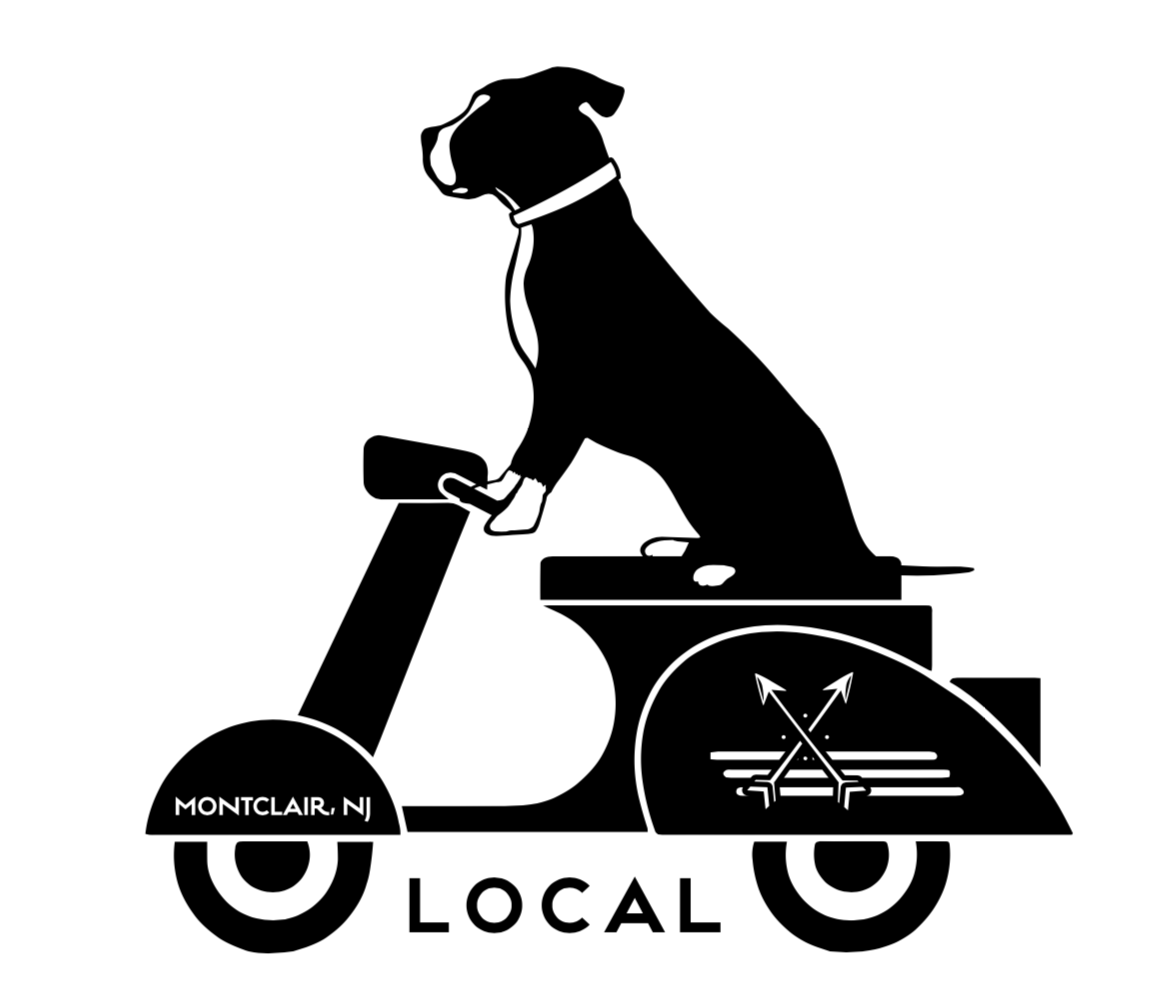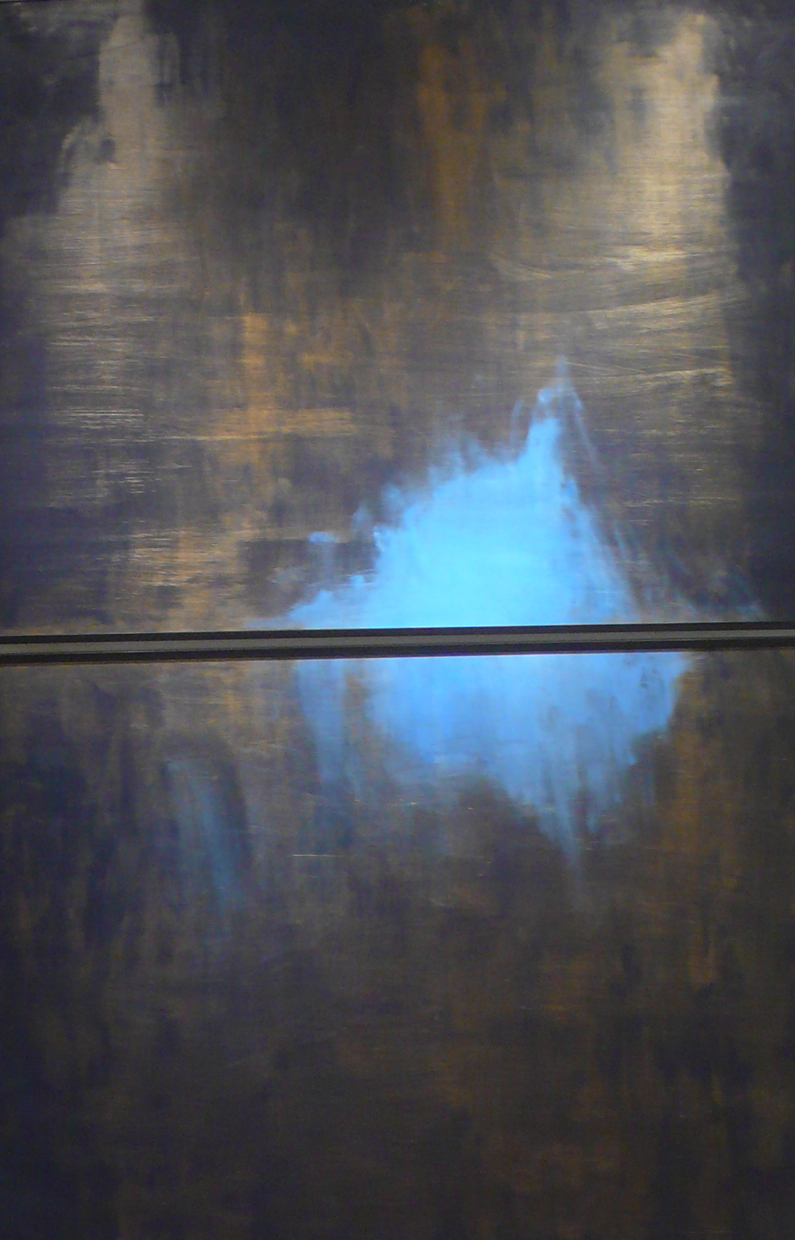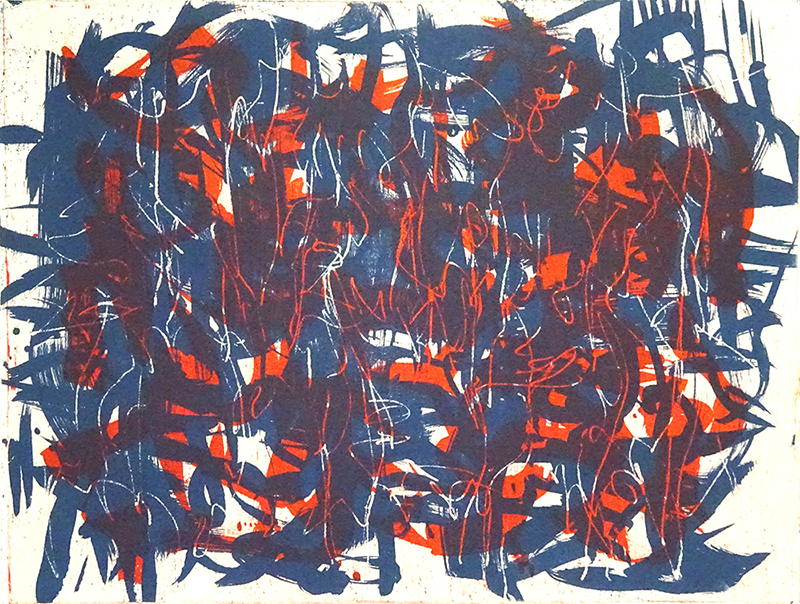Tracey, so happy to have your work up at Local. I knew you were a talented graphic designer but didn’t know there was this beautiful art for art’s sake side to you. What discipline came first?
Thank you Robert! The fine arts side definitely came first, but I didn't know to call it that at the time. I remember growing up doodling on the brown paper bags the schools made cover our textbooks with, and trying to recreate the art school drawing application ad in the weekly TV Guides. I think that's where it all started, or at least my first memories of it. In college, I studied Advertising and Graphic Design which is what eventually brought me to having my own Graphic Design/Branding business today, but there were many years in between that I focused more on fine arts, photography and writing. I would hike or sit outside and images or storylines would come to me, so I'd always have to get it down on paper (or canvas) as soon as possible. That is where my dreams would always take me and still do - writing and illustrating would be the ultimate joy in the every day career world for myself. That and also learning how to animate what is constantly playing in my mind when I am drawing, writing or painting.
There’s quite a variety of work on display. Tell us why you selected these particular pieces to share?
It's been over 20 years since I have really had my work on display, at least like this type of showing. So to be honest it was hard to select one style only to show since I was so excited to be stepping back into this world again! I also wasn't sure which style or styles would be what people enjoyed so I wanted to put it all out there (in a hopefully non-chaotic way!) and see what would happen.
You work across a few different artistic tools. How did you arrive at this particular mix?
There is the side of me that loves to paint and those images/styles would come from taking photos of nature scenes that pop out to me with colors and textures. These puzzle piece shapes and textures were all I'd see and that is how I came to create the "puzzle peace" style in my work (naming it after the sense of calm it would create in me when creating and how others said they felt in looking at the finished pieces). In time I developed a similar series to the gouache and acrylics but using ink or Sharpie markers instead - more portable and a different type of color pop result.
I'm also a huge animation lover and have many stories I've written with playful characters illustrated out. So while those particulars are not on display, I did want to display that side of illustration that bubbles up at times too. Sometimes it's cartoony, sometimes more sketch illustration. It's whatever comes into my mind based on what I am seeing in person or in my mind calling out to be drawn.
You spend quite a bit of time on the computer for work. How cathartic (or not) is it to work with your hands to create and develop your art?
I grew up in a time where the creative arts were being taught mostly off the computer.... my college classes of color theory, typography, graphics were filled with spray mount and x-acto knives and rubber cement erasers. That is all still heaven to me. There is nothing like that feeling of doing things by hand and having paint/ink stained fingers. It's like the artist's tattoo - that washes out eventually but you carry it around like a badge of honor. "Yes, I am an artist." May sound funny but it brings such a smile to my face and heart to look down and see my hands stained and materials spread on the table. The same is with taking photos, creating murals, fabric art, wire sculpture, anything creative that I am doing. If it's a hands-on project, I am all in.
Is there a particular message you aim for your work to communicate?
That's an interesting question. When I started this, it was only for myself - it was something I'd doodle on napkins while waiting tables in and after college. I'd zone out while listening to music and draw random shapes depending on what the sounds brought up for me. It was a relaxing way to spend time and just be in the moment. People started to respond to it and with that I suppose grew this hope that people would see the playfulness of what the shapes started to become.... I would find this random shapes were actually images of people or animals, without event planning it. And then my artwork took off in a whole new direction and people really ressponded to that. They would point out images within the images they'd find. It was as if they were finding their own stories inside this visual story before them. It's really amazing. So I suppose I hope that people enjoy what I have created and get lost in the magic for a little while of imagination
What has living in Montclair meant for you in how you approach your craft?
One of the reasons why I chose Montclair as the town to move my kids and I to was because of the support of the arts - for myself and for my kids to embrace the love of their own arts passions. Montclair is filled with so many creative people that having the space to have those conversations sharing the ways we see the world has made it easier to open my time and world back up to something that was on hold for too long. In recent years I have done projects here and there as a result. A few years back I was hired to illustrate Jay Blakesberg's book Hippie Chick with my funky doodle style creations. Total pinch me full circle moment of being a person who would draw random inked artwork in a sketch book at Dead shows to years later creating those same styles to be printed alongside Jay's incredible photos he took at shows along his own creative journey. As people began to see my artwork, I was asked to participate in the newly created Cedar Grove Artwalk where 20 local artists were given street banners to create our own expressions of what Cedar Grove has to offer. Last year, their inaugural year, I illustrated two views of Mills Reservation in my Sharpies Puzzle Peaces style. This year I painted two versions of the same view of mini flowers that scatter the landscape. The banner experiences were so incredible and would never have happened if i hadn't moved to Montclair. It opened myself up to wanting to rework my time, for sure, to have art be more a part of my world like it was once before.
You are very involved with the genesis of MDW (Montclair Design Week). what is your hope for this program?
I was a part of the MDW pioneer group on the arts side of creating graphics and the website in the first, developing year. In being involved, my hope was to be a part of opening people's minds to see things differently. That design is everywhere and it doesn't always mean that Design = Art. Design can be how a program is structured for a classroom, how paint moves across a canvas, how a business is structured for success, how flavors are blended in meal...design is everywhere and is about how we creatively express ourselves. This year my role has shifted a bit to more of the backend needs, but the hope is still the same while seeing what the new volunteers are bringing to the development the second time around.
Is there a current art project that you have on the works?
Yes actually! From having this experience here at Local I was asked to participate in an upcoming Live Painting project in collaboration with photographer Armando "OUTthere" Diaz which was a total suprise and I excited to try that for the first time. I was also commissioned for some pieces based off of what visitors have seen hanging in the space here which I am still smiling from. So that is super exciting too! Outside of that, I am going to look for new spaces to show my work and hopefully make my way into the publishing world with books or albums (ok, I'm an 80s kid, so band related art) or animation. That's all been a huge dream of mine for a long time and feels like it's time to get back to making it happen.
What is your favorite coffee or tea beverage?
Oh boy - so I am a big lover of a Dirty Chai Latte, especially when I have a lot of work to get through. And on the tea side, I once discovered the loose tea combination of Hibiscus, Rosehips and Camomile and nothing beats it. One sip instantly transports me back to a peaceful place of drawing inspiration since that is what I would always have next to me while my sketchbook was out.
Learn more about Tracey on her website here
























